Maratha Feminism
Scindia Maharanis
The Marathas, and especially the Scindias, have always given queens who took up leadership roles if ever a crisis arose in their states. This majesty emerged from their upbringing, from the Maratha value system they followed.

The Scindia Matriarch
Chimabai Raje Scindia Sahiba
Chimabai Raje Sahib is remembered as the major reason behind the resurrection of Hindavi Swarajya. One of these instances is when, despite the difficult circumstances they were in, she urged Mahadji Scindia to use her personal jewelry to raise a new Maratha army after the Third Battle of Panipat. Chimabai is commemorated today for her character, as she is Maratha resurrection personified.
Epitome of magnanimity and diplomacy
Gangabai Raje’s visit to Rajasthan is especially remembered, as she traveled to resolve a dispute between Maharana Bhim Singh of Mewar, who considered her a sister, and Devgarh Rao. The parties arrived at an understanding in her presence, following which she embarked for Gwalior with her retinue, as per a historical account en route, they were ambushed by marauding bands of Salumber Rao, Kanod Rao and Bedla Rao who opposed her presence in Mewar, a battle followed in which Gangabai Raje fought bravely but was assassinated by her enemies at village Lalpura as per another historical account she died a natural death. The Maharana gifted Lalpura and a dozen other Mewar villages to Gwalior state, in memory of Gangabai Raje Scindia. A temple was built in her memory by Gwalior state, and the village named Gangapur, in her honour.
Gangabai Raje Scindia Sahiba
Known as the peacemaker queen, Gangabai Raje Scindia was adept at diplomacy and also not one to hesitate when preparation was needed for war. She bestowed her jewelry to her husband Mahadji Scindia, so that he may raise a new Maratha army, following the Third Battle of Panipat.Gangabai Raje’s visit to Rajasthan is especially remembered, as she traveled to resolve a dispute between Maharana Bhim Singh of Mewar, who considered her a sister, and Devgarh Rao. The parties arrived at an understanding in her presence, following which she embarked for Gwalior with her retinue, as per a historical account en route, they were ambushed by marauding bands of Salumber Rao, Kanod Rao and Bedla Rao who opposed her presence in Mewar, a battle followed in which Gangabai Raje fought bravely but was assassinated by her enemies at village Lalpura as per another historical account she died a natural death. The Maharana gifted Lalpura and a dozen other Mewar villages to Gwalior state, in memory of Gangabai Raje Scindia. A temple was built in her memory by Gwalior state, and the village named Gangapur, in her honour.
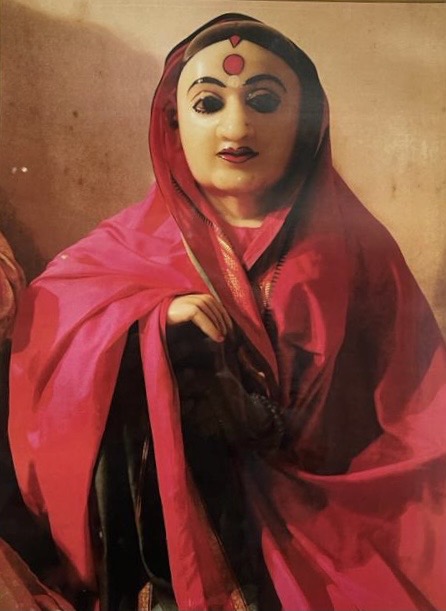
The Banker Queen, an anti-British pioneer
Active in the high politics of the Scindia durbar, it is said that Baiza Bai inherited her father Sarje Rao Ghatge’s anti-British stance. With a keen sense for matters of state, and early training in riding and weaponry, Baiza Bai’s multifarious abilities were widely recorded.
The early 19th Century traveler Fanny Parkes mentions how once “Her Highness as the head of her troops rode a horse, with a lance in hand and an infant in her arms.” She was a bold and skillful horsewoman, could use both spear and sword, and accompanied her husband Maharaja Daulat Rao Scindia in some of his military campaigns. She accompanied him to the battlefield in the Battle of Assaye in 1803, against Lord Arthur Wellesley.
Baiza Bai questioned and overcame prevalent stereotypes, not just through her equestrian skill and martial bearing, but also through her own education and temperament. It is said that she once ordered a steam vessel up-river to allow her to inspect its machinery. Fanny Parkes also records how Baiza Bai challenged the patriarchy prevalent in the institution of the Zenana (the women’s quarter) being supposed as the ideal place for women.
As Maharaja Daulat Rao Scindia grew ill, he directed that Baiza Bai be his successor. In 1827 she ascended the throne of Scindia Raj - coins were struck in her name and orders passed under her seal. She adopted a son, and her was placed on the throne as Jankoji Scindia.
Baizabai Raje Scindia Sahiba
Baiza Bai was a trailblazer, in statecraft, participating in armed campaigns and, above all, in being a role model for women and overcoming stereotypes. She is acknowledged today as a forgotten historical icon.Active in the high politics of the Scindia durbar, it is said that Baiza Bai inherited her father Sarje Rao Ghatge’s anti-British stance. With a keen sense for matters of state, and early training in riding and weaponry, Baiza Bai’s multifarious abilities were widely recorded.
The early 19th Century traveler Fanny Parkes mentions how once “Her Highness as the head of her troops rode a horse, with a lance in hand and an infant in her arms.” She was a bold and skillful horsewoman, could use both spear and sword, and accompanied her husband Maharaja Daulat Rao Scindia in some of his military campaigns. She accompanied him to the battlefield in the Battle of Assaye in 1803, against Lord Arthur Wellesley.
Baiza Bai questioned and overcame prevalent stereotypes, not just through her equestrian skill and martial bearing, but also through her own education and temperament. It is said that she once ordered a steam vessel up-river to allow her to inspect its machinery. Fanny Parkes also records how Baiza Bai challenged the patriarchy prevalent in the institution of the Zenana (the women’s quarter) being supposed as the ideal place for women.
As Maharaja Daulat Rao Scindia grew ill, he directed that Baiza Bai be his successor. In 1827 she ascended the throne of Scindia Raj - coins were struck in her name and orders passed under her seal. She adopted a son, and her was placed on the throne as Jankoji Scindia.

Leading through difficult times.
Tarabai Raje’s resolve and public spirit supplemented Baiza Bai, who from Kolhapur was putting in place plans to overthrow British Rule in India. Tarabai Raje astutely and clandestinely advanced Baiza Bai’s efforts.
In Gwalior, oral history affirms that during the the 1857 War of Independence, Tarabai Raje, aware of the location of the Scindia Treasury, opened it up for the rebels, whose soldierly dues from the British had been stuck for an extended period.
When the British discovered that the rebels had received monetary aid from Gwalior State, they hung in 1858 the loyal Scindia treasurer Amar Chand Banthia, who chose to take the blame on himself.
Tarabai Raje’s decision was daring, and came at a time when almost all Princely States of India, like Jaipur, Jodhpur and Bikaner, had weighed in for the British. Where the British weren’t in receipt of seconded armies, they they extracted commitments that no support was to be offered to the rebels. It was in such circumstances that Tarabai Raje Scindia had ensured the rebels and freedom fighters were well funded.
Tarabai Raje Scindia Sahiba
Born 1831, Tarabai Raje became Regent when she was just thirteen and her adopted heir Maharaja Jayajirao Scindia barely nine. The next decade and a half were to be a tumultuous time, as already the British were looming following their victories in the Third Anglo-Maratha War. Several Gwalior nobles too were vying for control of the state.Tarabai Raje’s resolve and public spirit supplemented Baiza Bai, who from Kolhapur was putting in place plans to overthrow British Rule in India. Tarabai Raje astutely and clandestinely advanced Baiza Bai’s efforts.
In Gwalior, oral history affirms that during the the 1857 War of Independence, Tarabai Raje, aware of the location of the Scindia Treasury, opened it up for the rebels, whose soldierly dues from the British had been stuck for an extended period.
When the British discovered that the rebels had received monetary aid from Gwalior State, they hung in 1858 the loyal Scindia treasurer Amar Chand Banthia, who chose to take the blame on himself.
Tarabai Raje’s decision was daring, and came at a time when almost all Princely States of India, like Jaipur, Jodhpur and Bikaner, had weighed in for the British. Where the British weren’t in receipt of seconded armies, they they extracted commitments that no support was to be offered to the rebels. It was in such circumstances that Tarabai Raje Scindia had ensured the rebels and freedom fighters were well funded.
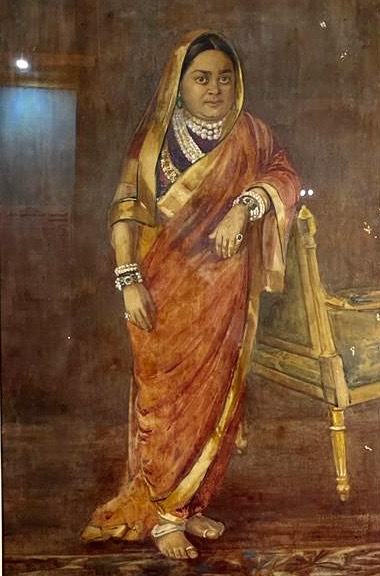
Majesty, personified
Becoming, at 14, mother to Maharaja Madho Rao Scindia, she assumed Regent’s responsibilities a decade later. Her life was of a continued exercise of power and influence, often military. She was Colonel-in-Chief of the First Jiwaji Gwalior Lancers, and even had a regiment named in her honour - the First Maharani Sakhya Raje’s Own Gwalior Infantry.
Fond of Shivpuri, she breathed her last there, on 9 September 1919.
Sakhya Raje Scindia Sahiba
Maharani Sakhya Raje Scindia was born to Sardar Krishna Rao Jadhav (also known as Bapu Saheb Jadhav). Her life bridged two centuries, and was a reflection of complex global shifts.Becoming, at 14, mother to Maharaja Madho Rao Scindia, she assumed Regent’s responsibilities a decade later. Her life was of a continued exercise of power and influence, often military. She was Colonel-in-Chief of the First Jiwaji Gwalior Lancers, and even had a regiment named in her honour - the First Maharani Sakhya Raje’s Own Gwalior Infantry.
Fond of Shivpuri, she breathed her last there, on 9 September 1919.
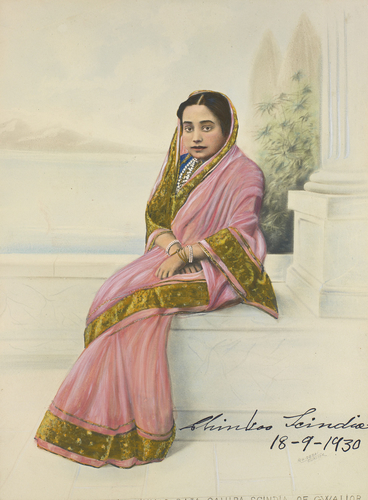
The fashionista Maharani
Chinkoo Raje led a fascinating life, at the side of Maharaja Madho Rao Scindia and in her own capacity as a social reformer and fashionista. A motivator and an inspiration, she read and traveled widely, and was a source of counsel for many. Amongst other things, Chinkoo Raje was a collector of curios and antiques. Maharaja Madho Rao adored her so that he ensured everything she needed and desired was customized to her petite frame.
Chinku Raje Scindia Sahiba
Affectionately known as the Little Queen of India, Maharani Chinkoo Raje Scindia was born to Sardar Madho Rao Balwantrao Mohite (also known as (Bhau Sahib) of Satara.Chinkoo Raje led a fascinating life, at the side of Maharaja Madho Rao Scindia and in her own capacity as a social reformer and fashionista. A motivator and an inspiration, she read and traveled widely, and was a source of counsel for many. Amongst other things, Chinkoo Raje was a collector of curios and antiques. Maharaja Madho Rao adored her so that he ensured everything she needed and desired was customized to her petite frame.
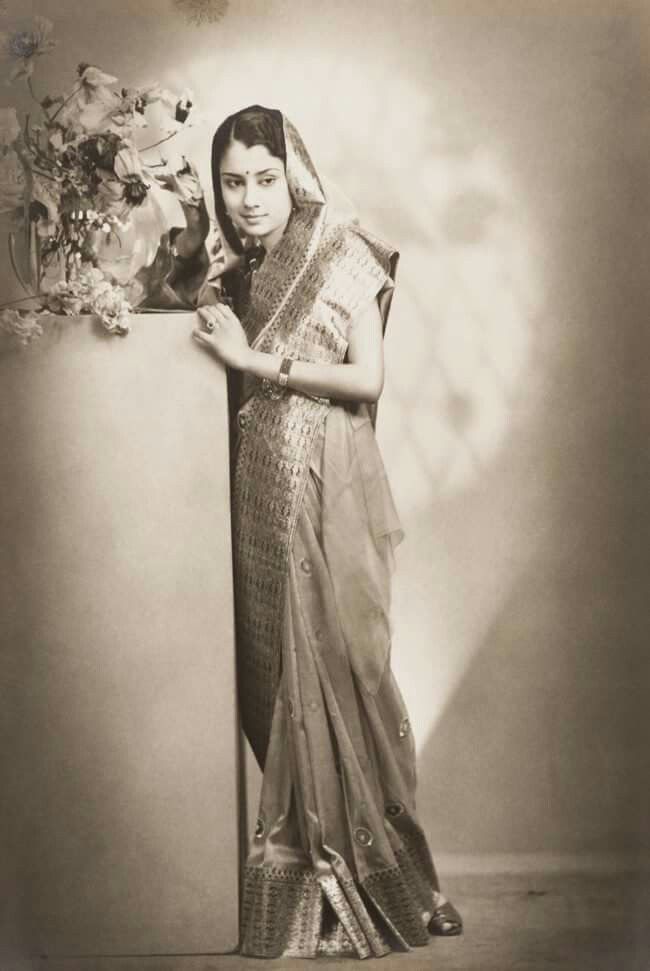
From Rajpath to Lokpath
Renowned for her selfless devotion to bettering the circumstances of the underprivileged, her orientation towards social impact began early. As a teenager, she witnessed the peak of India’s Independence Movement, and was inspired to boycott foreign fabrics and goods.
At 22, she wed Maharaja Jiwaji Rao Scindia, the last King of Gwalior state. Despite this transition, the Rajmata’s life was one where she would travel widely to meet those in need, help the underprivileged and give voice to victims.
She was also active in politics, and was a founding member of the Bharatiya Janata Party. Nurturing it and supporting it when it could count on few, she was described by former Prime Minister Atal Bihari Vajpayee as “Rajmata of India.”
Vijaya Raje Scindia Sahiba
Rajmata Vijayaraje Scindia née Lekha Divyeshwari Devi was the daughter of Thakur Mahendra Singhji of Sagar by his first wife Chuda Devashwari Devi of Nepal.Renowned for her selfless devotion to bettering the circumstances of the underprivileged, her orientation towards social impact began early. As a teenager, she witnessed the peak of India’s Independence Movement, and was inspired to boycott foreign fabrics and goods.
At 22, she wed Maharaja Jiwaji Rao Scindia, the last King of Gwalior state. Despite this transition, the Rajmata’s life was one where she would travel widely to meet those in need, help the underprivileged and give voice to victims.
She was also active in politics, and was a founding member of the Bharatiya Janata Party. Nurturing it and supporting it when it could count on few, she was described by former Prime Minister Atal Bihari Vajpayee as “Rajmata of India.”
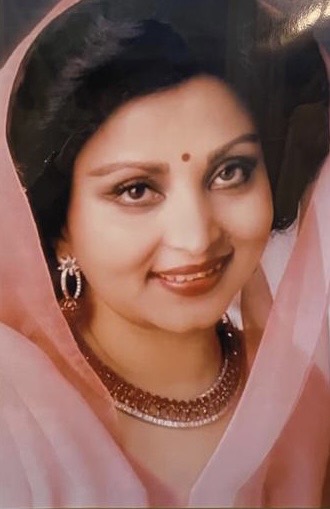
The Rajmata Sahiba.
Madhavi Raje Scindia is also the President of the Board of Governors of the Scindia Kanya Vidyalaya, a prominent Indian residential school for girls. She organized the building of two Chhattris, one for Maharani Vijaya Raje Scindia and one for her husband Madhavrao Scindia II. She was also the guiding light for the Maharaja Madhavrao Scindia II Gallery at the Jai Vilas Museum, in memory of her late husband.
Madhavi Raje Scindia Sahiba
A member of Nepalese royalty, Madhavi Raje married Maharaja Madhavrao Scindia II in 1967. She is deeply involved in philanthropy and social work, as the Chairperson of more than 20 charitable trusts that give assistance in education and medical care.Madhavi Raje Scindia is also the President of the Board of Governors of the Scindia Kanya Vidyalaya, a prominent Indian residential school for girls. She organized the building of two Chhattris, one for Maharani Vijaya Raje Scindia and one for her husband Madhavrao Scindia II. She was also the guiding light for the Maharaja Madhavrao Scindia II Gallery at the Jai Vilas Museum, in memory of her late husband.
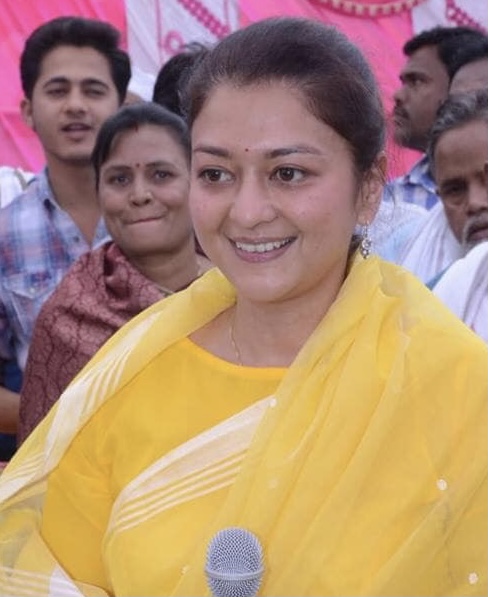
Our leader and inspiration
Quintessentially Maratha in her upbringing, Maharani Sahiba grew up a Gaekwad princess, before her marriage into the Scindia family, the sword arm of the Marathas in North India.
Priyadarshini Raje is passionate about documenting the history and heritage of the Marathas. A connoisseur of the crafts, she is the Founder of the Gwalior Design Project, and a champion of the region’s weavers and craftspersons.
Maharani Sahiba steers the Gwalior Heritage Foundation and the Gwalior Music Festival. She is also active on the Board of the Scindia Kanya Vidyalaya and Shishu Mandir, and is guiding a young group of entrepreneurs in and around Gwalior to take Brand Gwalior international.
Maharani Sahiba has also led various restoration projects, notably at Jai Vilas Palace, Usha Kiran Palace and Moti Mahal. This dovetails with her interest in promoting Gwalior as the hub of a heritage tourism circuit, and making Madhya Pradesh an essential to itineraries. She has written extensively on the topic, and developed workshops on guide training as a vocation for the hearing impaired.
With rare foresight, numerous interests and many talents, Priyadarshini Raje is blessed with a vision for her people, state, legacy and heritage.
Priyadarshini Raje Scindia Sahiba
HH Maharani Priyadarshini Raje Scindia (b. 1975) carries forward an illustrious Maratha legacy, preserving royal Maratha traditions with grace and passion.Quintessentially Maratha in her upbringing, Maharani Sahiba grew up a Gaekwad princess, before her marriage into the Scindia family, the sword arm of the Marathas in North India.
Priyadarshini Raje is passionate about documenting the history and heritage of the Marathas. A connoisseur of the crafts, she is the Founder of the Gwalior Design Project, and a champion of the region’s weavers and craftspersons.
Maharani Sahiba steers the Gwalior Heritage Foundation and the Gwalior Music Festival. She is also active on the Board of the Scindia Kanya Vidyalaya and Shishu Mandir, and is guiding a young group of entrepreneurs in and around Gwalior to take Brand Gwalior international.
Maharani Sahiba has also led various restoration projects, notably at Jai Vilas Palace, Usha Kiran Palace and Moti Mahal. This dovetails with her interest in promoting Gwalior as the hub of a heritage tourism circuit, and making Madhya Pradesh an essential to itineraries. She has written extensively on the topic, and developed workshops on guide training as a vocation for the hearing impaired.
With rare foresight, numerous interests and many talents, Priyadarshini Raje is blessed with a vision for her people, state, legacy and heritage.

